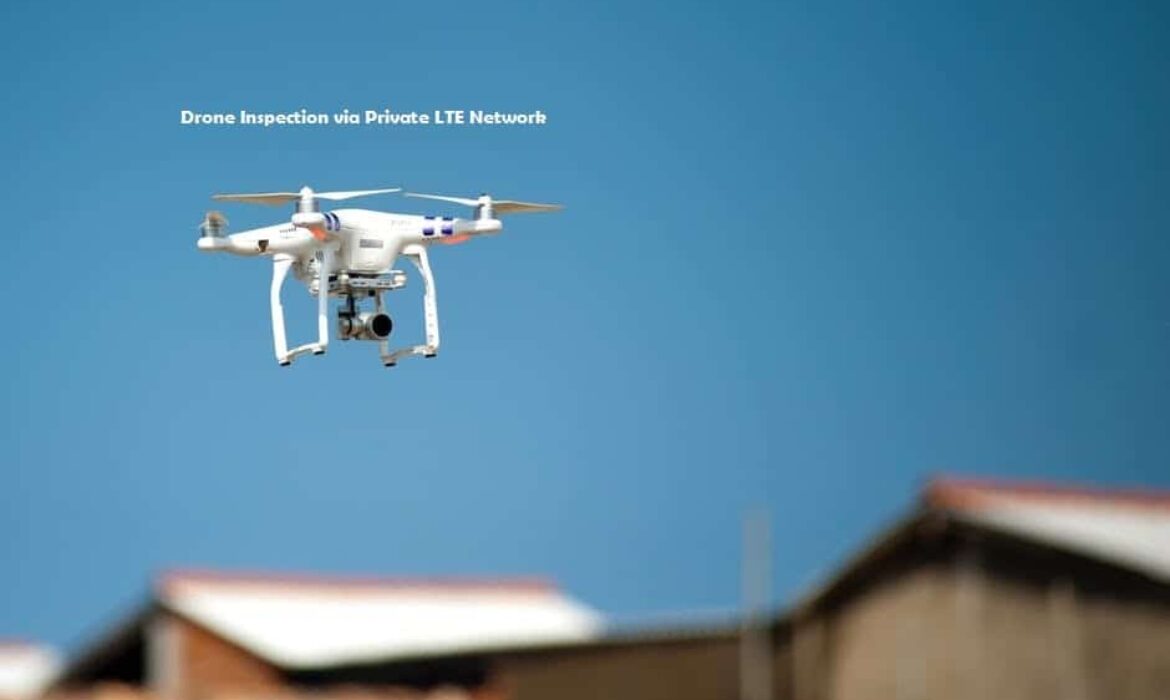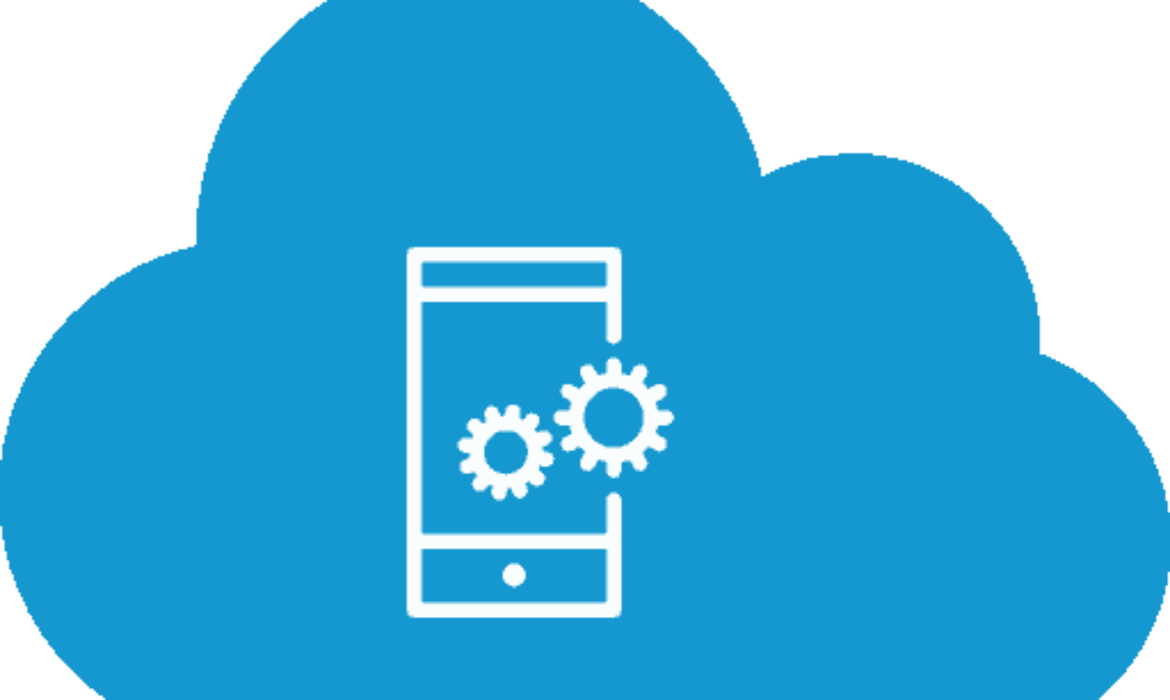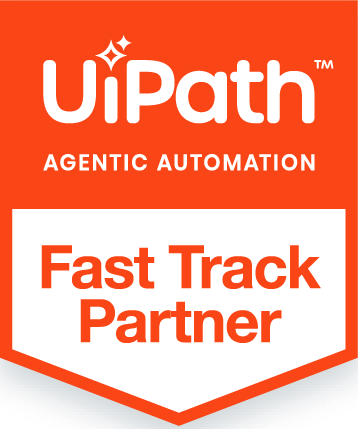IoT with Private LTE Networks is disrupting the Industrial Vertical – Is your business ready for this innovation?
In Feb 2017, Qualcomm along with GE and Nokia announced a successful demonstration of private LTE for industrial IoT market which created a great buzz in the industrial IT circles. This team has conducted live field trails to continue the research based on this demonstration throughout 2017 by integrating their platforms and technologies. While Nokia provided the base infrastructure and the Nokia Digital Automation Cloud Service for a private network, Qualcomm offered the wireless connectivity with chipset devices and GE integrated these solutions onto its Industrial IoT platform Predix for a better control of industrial resources across the infrastructure. GE leverages the Predix platform with a private LTE network setup at GE headquarters. This demonstration brings private LTE networks into the limelight.
An Overview of LTE Networks
Long Term Evolution (LTE) is an innovative high-speed wireless network technology that comes with low latency and high speeds over long distances for data terminals and mobile devices via UMTS technologies. It was designed by 3rd Generation Partnership Program (3GPP) as a 4G network communications standard to offer higher speeds for wireless networks; ten times faster than 3G networks. With IP-based voice, data and multimedia streams, LTE networks offer speeds between 10 Mbit per second and 1 Gbit per second and is easy to deploy and use. They can be deployed on different frequency bandwidth blocks. The current LTE networks support 1.4MHz, 3MHz, 5MHz, 10 MHz, 15MHz, and 20MHz. every 5MHz spectrum of each cell support around 200 active connections.
How does it work?
LTE uses two different air interfaces for downlink and uplink purposes. For the downlink from the tower to the device, LTE uses Orthogonal Frequency Division Multiple Access (OFDMA) air interface which allows multiple connections on a single cell and increased throughput of a connection. Similarly, for the uplink from the device to the tower, LTE uses Discrete Fourier Transform Spread Orthogonal Frequency Division Multiple Access (DFTS – OFDMA) air interface. With varying air interfaces for downlink and uplink, LTE networks optimize connections with better battery life for the devices.
LTE for Industrial IoT
LTE technology is not new but it gained momentum with the advent of the Internet of Things (IoT). While the cloud computing revolutionized the IT world and centralized resources, it paved a way for BYOD networks wherein mobile devices entered the network. The next big step was Internet of Things wherein sensors and other industrial devices joined the IT networks. With IoT, organizations are able to facilitate communication between a range of devices including IT and non-IT devices.
The main challenge for Industrial IoT is connectivity issues. More often, industrial companies have their temporary facilities located in remote places wherein reliable network connection is not easy to obtain. Whether it is an oil excavation site, mining site or a power plant, the regular network might provide basic connectivity but not the required speed and efficacy. As industrial infrastructure is now equipped with robotics, automated guided vehicle (AGV), drones, Augmented reality and virtual reality (AR/VR), high-speed and low latency data transfer becomes a critical requirement. The data should be stored locally while having a global access. Services should be interoperable. This is where LTE networks come to the rescue. The temporary industrial sites can set up a standalone LTE network and enjoy reliable and faster network connectivity for that facility.
The state of LTE Networks
Today, every cellular mobile device supports 4G LTE network. While AT&T and Verizon launched 4G LTE networks, others are quickly following them. According to ReportsandReports, the global investments in LTE networks accounted for $800 million in 2016. This value is expected to grow at a CAGR of 32% between 2016 and 2020. Persistence Market Research envisages that the global LTE networks market value would reach $926.1 billion by 2024, growing at a CAGR of 13.1% between 2016 and 2024. Similarly, Harbor Research reports that the private LTE network would reach $17 billion by 2022.
Public LTE Vs Private LTE
Enterprises can either choose public or private LTE networks. When it comes to a public LTE offering, the network is managed by the service provider. While it gives wide-area coverage, it is also shared by other customers. Public LTE networks provide general voice and data services.
Private LTE networks bring additional benefits to the table. Firstly, private LTE networks come with dedicated equipment and are managed locally, giving better control over data. Moreover, there are no sudden traffic surges. With the consistent performance, industrial facilities can manage productivity at predictable levels. Secondly, private LTE networks are easy to deploy and use for dedicated as well as virtual resource-based infrastructure. Thirdly, private LTE networks offer dedicated service which means high-quality service is guaranteed along with the ability to customize the network to suit industrial-specific needs.
Benefits of Private LTE Networks
- Support multiple devices with higher bandwidth
- Customizable for features such as mobile settings and quality of service
- Highly secure
- Better control over data
- Future proof as you can leverage the LTE roadmap
- Superior coverage for indoors and outdoors
- Seamless mobility
- Interoperability between suppliers
Private LTE Networks take the Industrial IoT to a new horizon
As the IoT networks increased, the need for higher speed and coverage, full mobility, latency and quality of service became a critical requirement for industrial facilities such as airports, ports, container ports, warehouses etc. Qualcomm has partnered with GE and Nokia to create a unified communication network system. The result is the first Private LTE-based network for industrial IoT. By integrating all the devices in the network and bringing them onto an industrial OS Predix platform, organizations are now able to incorporate latest technologies such as machine learning, analytics, artificial intelligence and predictive maintenance to significantly improve the efficiency of business processes and services. Nokia takes the automation to a new level by offering a private plug n play LTE ecosystem. The wireless communication is managed by Qualcomm. Multefire is an LTE deployment initiated by Qualcomm and Nokia. It is now managed by Multefire Alliance that was formed in December 2015. Similarly, Federal Communications Commission (FCC) in the US has defined Citizen Broadband Radio Service (CBRS) that offers 150 MHz shared spectrum band in 5.5 GHz band. So, organizations have two solutions to cost-effectively own and manage their private LTE networks without purchasing spectrum licenses.
As private LTE networks bring low latency and high-speed wireless connectivity, industries can add more sensors, analytics and automation devices to efficiently manage business-critical procedures such as handheld computing, AGV, head mounted display, industrial robots, edge computing and analytics, interactive maintenance, environmental sensors, drone inspection, turbine and blade sensors etc..
Private LTE Use cases
Manufacturing Vertical
In manufacturing industries, welding robots are commonly used for welding and handling automobile parts on the assembly line. Synchronization between a robot and the assembly line sensor is critical for precision of a process. A small delay in communication will result in the collision between the robots that in turn collapses the entire assembly line processes. For this reason, many industries are running hard-wired connections that are expensive. Moreover, wired connections occupy more footprint and clog the area as well. With private LTE networks, organizations can operate with wireless robots and thereby save time, money and footprint.
Mining Vertical
In a mining location, people have to work in harsh and remote environments. While sophisticated and automated solutions are available, organizations cannot use them owing to the lack of proper communication systems for real-time data for remote vehicles, systems, and the monitoring center. With a private LTE network, organizations can replace regular vehicles with driverless vehicles so that they can quickly reach out to remote areas and precisely apply drill blast procedures. The mining operations can be efficiently monitored from a centralized dashboard.
Healthcare Vertical
Healthcare is one of the important verticals that hosts a large number of IoT devices ranging from scanners and X-Rays to clinical and biometric devices. However, healthcare organizations use Wi-Fi only because they are not able to choose one mobile service provider’s ratio for all devices. Obtaining FDA certification for all clinical devices is cumbersome. However, the CBRS LTE networks now allow organizations to choose a spectrum that is independent of a mobile service provider. Moreover, one FDA certification would work for any private LTE spectrum.
Getting started with Internet of Things (IoT)
Introduction
Internet of Things (IoT) has been the latest buzz in IT circles in recent times. This disruptive technology is bringing digital, analog and mechanical devices under a single umbrella to simplify infrastructure management. IoT secures business processes, improves operational efficiencies, optimizes costs and allows for better decision making.
 According to MarketsandMarkets, the market value of IoT reached $157.57 billion in 2017. This value is expected to touch $561.04 billion by 2022, growing at a CAGR of 26.9%. Juniper envisages that the total number of devices connected to the IoT networks would reach 42 billion by 2021. According to a McKinsey report, the IoT market that was valued at $900 million in 2015 is expected to touch $3.7 billion in 2020, growing at a CAGR of 32.6%.
According to MarketsandMarkets, the market value of IoT reached $157.57 billion in 2017. This value is expected to touch $561.04 billion by 2022, growing at a CAGR of 26.9%. Juniper envisages that the total number of devices connected to the IoT networks would reach 42 billion by 2021. According to a McKinsey report, the IoT market that was valued at $900 million in 2015 is expected to touch $3.7 billion in 2020, growing at a CAGR of 32.6%.
An overview of Internet of Things
Internet of Things is a system or network of interconnected things, ranging from digital devices to mechanical devices and sensors, with an ability to transfer or exchange data without human or computer intervention. The transfer of data is done using unique identifiers. Simply put, IoT is a network of things. These things can be anything from an animal with a biochip, a human with a monitoring chip implant or a built-in sensor that monitors the temperature of a device.
In the tradition network setup, only computer devices were able to communicate with each other. With the advent of the IoT, computers, sensors and other mechanical devices are able to join any network and exchange data between them. Internet of Things is actually a combination of Microservices, wireless technologies and micro-electrical mechanical systems (MEMS). It was first mentioned by Kevin Ashton of MIT Auto-ID center in 1999. The advent of IoT has allowed people to analyze machine-generated data and better control business procedures.
How do IoT Systems work?
The IoT system comprises multiple devices or sensors, each assigned with a unique identifier. For instance, a logistics company runs a fleet of vehicles with a GPS system, a power plant uses a sensor to monitor the temperature of a boiler, a biochip implanted to an animal to check its temperature etc. The data collected from a device/sensor is automatically uploaded to the cloud or to a central location using a variety of communication protocols such as LAN, WAN, Wireless, cellular network, low-energy Bluetooth, NFC, RFID, ZigBee, Z-Wave etc.

The data that is stored in the cloud is processed using an analytics software. Based on the threshold values set by the user, the software monitors the data and automatically performs specified actions. For instance, if the boiler temperature is set to a threshold value and if it reaches that value, the software automatically turns off the boiler to avoid blasting. At the same time, it sends an alert notification to the concerned people. Using a centralized dashboard, you can remotely monitor and manage the IoT infrastructure with ease.
How do devices in an IoT network speak to each other?
When you send data from one device to another, the data is broken into smaller packets that travel through various routes to reach the destination. Once the data reaches the destination, the pieces of data are reassembled. An Internet Protocol is used for this messaging system. There are two types of internet protocols; Transmission Control Protocol (TCP) and User Datagram Protocol (UDP). While UDP is quick and efficient, it doesn’t verify the receipt of the data. TCP actually checks if the data has arrived.
When it comes to the Internet of Things, there are multiple devices that vary in hardware, software, connectivity, application and messaging protocols. So, communication methods differ with each IoT system.
Common Communication Protocols for IoT systems

IoT Device to IoT Device
When you want an IoT device to communicate with another IoT device, Data Distribution Service (DDS) is a good option. It is a middleware protocol that uses the publish-subscribe model to receive and send data. DDS protocol eliminates complex network programming in distributed applications and offers highly scalable and reliable data connectivity. With message-centric middleware, developers have to write code for sending messages. However, data-centric middleware is aware of the data it stores. DDS is data-centric which
means it is best suited IoT networks, offering better control over data management. With a rich set of Quality of Service (QoS), DDS enables you to control how data is stored and distributed which makes it a better choice for industrial IoT as well as consumer IoT.
IoT Device to the Cloud
When you want to collect data from multiple IoT devices in a large network and send this data to the cloud for analysis, you need a system that can efficiently ingest massive amounts of data. For instance, a large shopping mall contains multiple HVAC devices. Each HVAC device reports metrics such as temperature, humidity, load, energy consumption, air quality and desired temperature etc., generating gigabytes of data in few seconds. To process, store, analyze and manage these massive datasets, you need a powerful messaging system. Apache Kafka is the answer.
Apache Kafka
Sensor devices cannot run the full stack of TCP protocols. So, they use an IoT gateway such as Zigbee or Z-Wave to aggregate datasets and route them to the corresponding data points. Apache Kafka clusters receive these datasets and send them to corresponding data points, for instance, metrics such as temperate and humidity needs real-time monitoring. So, they are sent to real-time processing solutions such as Apache Spark or Apache Storm. Similarly, metrics such as energy consumption and load are collected over time and analyzed using Hadoop data analytics systems. Apache Kafka acts as a publish-subscribe messaging system wherein massive amounts of datasets are ingested into the system.
MQTT
When you use multiple client apps that exchange real-time messages on various topics, Message Query Telemetry Transport (MQTT) is a good choice. Invented by Dr. Andy Stanford of IBM, MQTT is a lightweight protocol that uses the publish-subscribe messaging system. Working on top of the TCP/IP protocol, MQTT facilitates data communication even in low bandwidth networks. It uses the TCP/IP port 1883. Being a lightweight protocol, it allows devices with small code footprint to remotely send data to the cloud. MQTT is best suited for mobile devices wherein low power usage, small footprint and minimized data packets are involved.
CoAP
When you have resource-constrained devices such as wireless sensors nodes in the IoT network, Constrained Application Protocol (CoAP) is a good choice. This service-layer protocol enables constrained nodes to easily communicate with the regular nodes on the Internet. It can be easily integrated with the web as it easily translates to HTTP. CoAP is also used for sending SMS by communication networks.
RESTful API
As multiple devices are connected to an IoT network, developers should be able to access specific devices without knowing their protocols or intricacies. REST APIs enable you to expose them as interfaces so that you can write code for devices as you normally do for backend systems. RESTful APIs are best suited for IoT systems as they allow any device that can use HTTP to make its state available and standardize a way to manage data. So, developers can write a code wherein you check the state of a light bulb and turn it on/off. REST uses a unified architectural style which means a single app can use the same software written in different programming languages. With RESTful APIs, developers can focus on the application interactions instead on the applications themselves.
A common IoT platform is the need of the hour
As there are multiple devices involved in IoT networks, it is not easy to come up with a common protocol for device communication. There are two groups that are trying to create a common communication platform for IoT devices. The first one is Allseen Alliance that is backed by companies such as Qualcomm and Cisco. The second one is Open Interconnect Consortium that is backed by companies such as Intel and Samsung Electronics. Allseen Alliance released a software framework platform called the Alljoyn IoT platform recently. OIC came up with another framework platform called IoTivity. Looking at these efforts to implement standards in the IoT network, we can expect complete operability within the IoT in the days to come.





